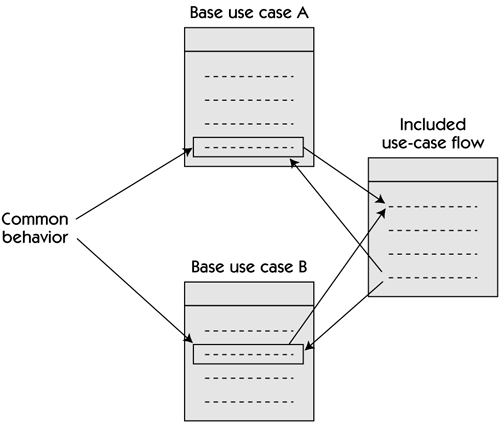Including Use Cases in Other Use Cases
This problem is addressed by the include [2] relationship. While it may seem complicated on the surface, the relationship is quite easy for the development team to grasp since it is analogous to a subroutine or include function in software. When the basic flow of events reaches the point of inclusion of the included use case, control switches directly to the flow of events in the included use case. When that flow is included, flow returns directly to the included use case at the next logical step past the include indicator, as illustrated in Figure 21-6.
Figure 21-6. The flow of an included use case When used properly, the include relationship can simplify the development and maintenance activities. Your team members should apply this construct as soon as they have mastered the basic use-case techniques. |
EAN: N/A
Pages: 257
